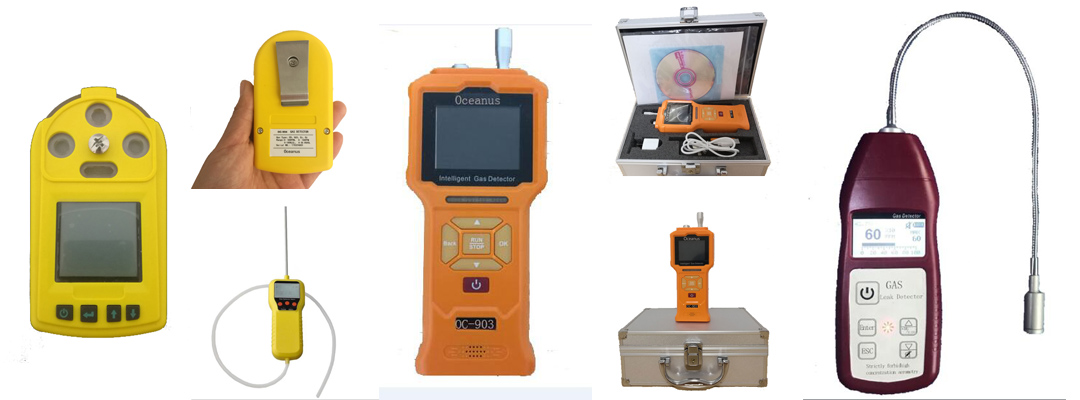Gas leak detection
Gas detectors can be used to detect combustible, flammable and toxic gases, and oxygen depletion. This type of device is used widely in industry and can be found in locations, such as on oil rigs, to monitor manufacture processes and emerging technologies such as photovoltaic. They may be used in firefighting.
Gas leak detection is the process of identifying potentially hazardous gas leaks by sensors. These sensors usually employ an audible alarm to alert people when a dangerous gas has been detected. Exposure to toxic gases can also occur in operations such as painting, fumigation, fuel filling, construction, excavation of contaminated soils, landfill operations, entering confined spaces, etc. Common sensors include combustible gas sensors, photoionization detectors, infrared point sensors, ultrasonic sensors, electrochemical gas sensors, and semiconductor sensors. More recently, infrared imaging sensors have come into use. All of these sensors are used for a wide range of applications and can be found in industrial plants, refineries, pharmaceutical manufacturing, fumigation facilities, paper pulp mills, aircraft and shipbuilding facilities, hazmat operations, waste-water treatment facilities, vehicles, indoor air quality testing and homes.
Gas detectors can be classified according to the operation mechanism (semiconductors, oxidation, catalytic, photoionization, infrared, etc.). Gas detectors come packaged into two main form factors: portable devices and fixed gas detectors.
Portable detectors are used to monitor the atmosphere around personnel and are either hand-held or worn on clothing or on a belt/harness. These gas detectors are usually battery operated. They transmit warnings via audible and visible signals, such as alarms and flashing lights, when dangerous levels of gas vapors are detected.
Fixed type gas detectors may be used for detection of one or more gas types. Fixed type detectors are generally mounted near the process area of a plant or control room, or an area to be protected, such as a residential bedroom. Generally, industrial sensors are installed on fixed type mild steel structures and a cable connects the detectors to a SCADA system for continuous monitoring. A tripping interlock can be activated for an emergency situation.
If you are interested, pls contact us: Email: info@china-oceanus.com; Tel: +86-371-60998169
- Pre:Managing Air Quality - Ambient Air Monitoring 2019/8/16
- Next:New portable gas detector with inner pump 2016/4/11





